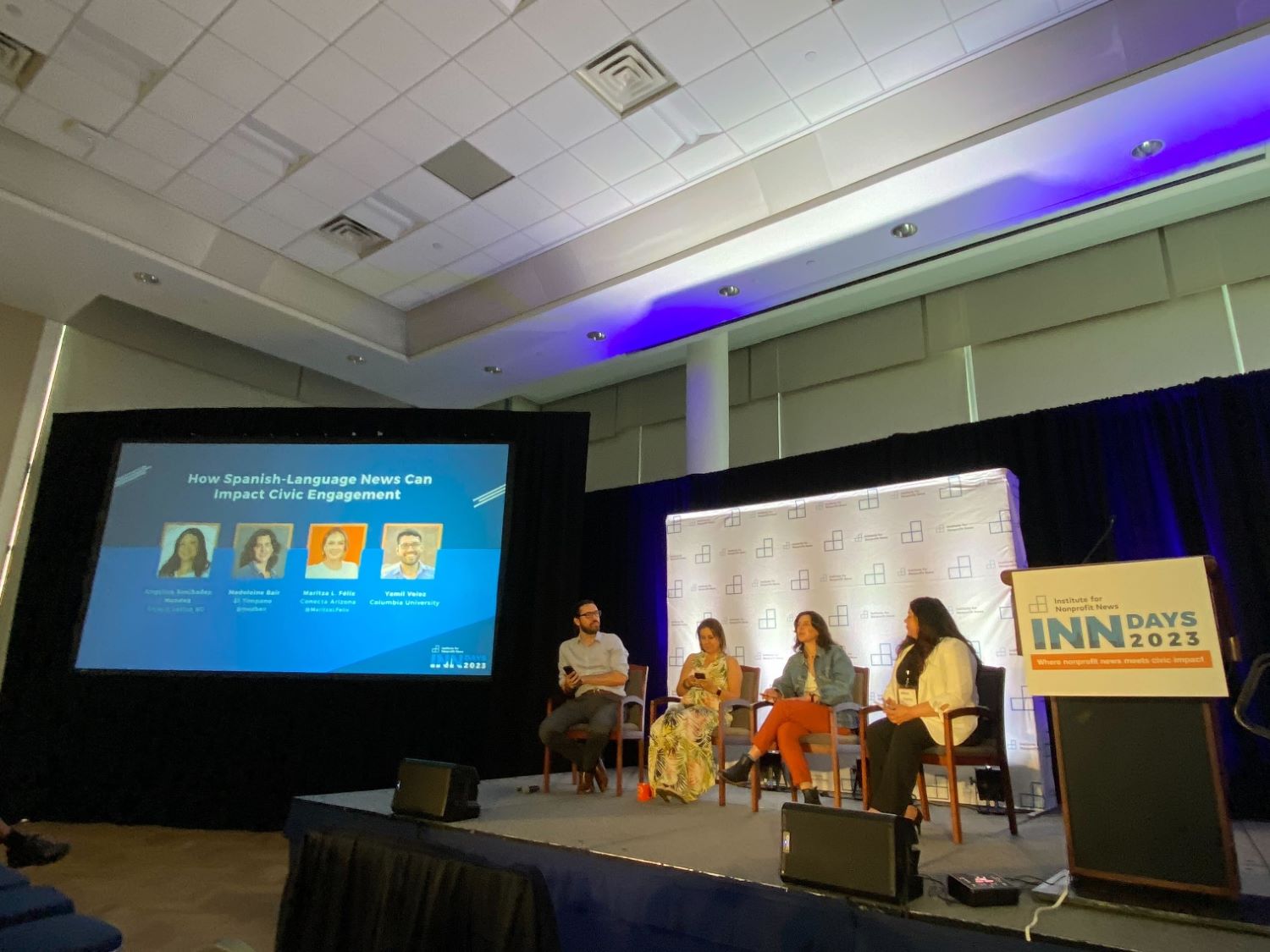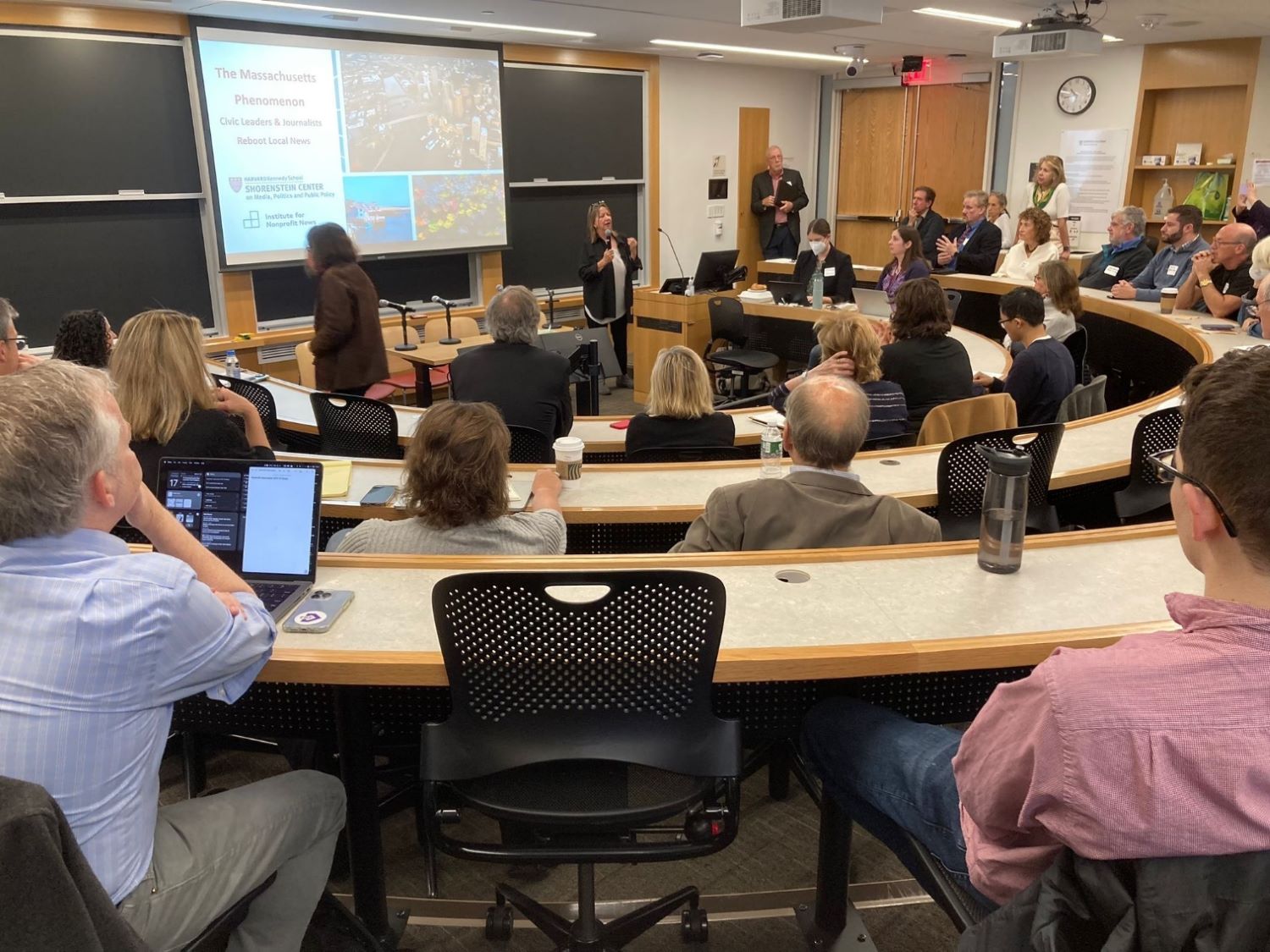Non-profit News – the Scarecrows to Keep Politicians Behave Well
Access to information is crucial for a healthy democracy, for a couple of key reasons. Firstly, it empowers citizens to make informed decisions, preventing choices based on ignorance or misinformation. Secondly, information plays a vital “checking function” by holding elected representatives accountable to their oaths and the desires of those who elected them.
Yet, the traditional business model that sustained local newspapers, relying on print subscribers and advertising for revenue, faces challenges. The shrinking audience for local news and vanishing advertising dollars make it increasingly unsustainable.
In recent years, thousands of local newspapers have shuttered, leaving millions of Americans without a crucial source of local news and robbing communities of an institution vital for uncovering wrongdoing and fostering civic engagement. Among those still standing, many have resorted to laying off reporters, cutting back on coverage, and scaling down circulation.
Local News Coverage Demise – American Politics Bear the Brunt
The local news industry took a severe hit from the COVID-19 pandemic, despite a significant surge in consumer demand for their content. In early 2020, visits to local news websites shot up by an impressive 89 percent from February to March. However, this boost in readership did not translate into increased revenue for newspapers.
Notably, Gannett, the nation’s largest newspaper publisher, witnessed a substantial 35 percent drop in ad revenues from 2019 to 2020, leading to journalist layoffs, furloughs, early retirements, and pay cuts.
But it’s vital to understand that the crisis in local journalism has been unfolding for over two decades, with declining newspaper circulation, newsroom employment, and numerous newspaper closures since 2000.
Legacy newspaper staffing in the U.S. fell from 71,000 employees in 2008 to 31,000 in 2020, according to the Pew Research Center. The internet disintegrated classified ad revenue over the past two decades, making the for-profit news model less viable for local and regional news outlets.
What’s even more concerning is that the general public remains largely unaware of this crisis, most people don’t seem to notice that the news business is struggling, with 71 percent of Americans believing in late 2018 that their local news media was financially stable, despite only 14 percent admitting to paying for local news in the past year. If this trend continues, we’ll face significant consequences as local newspapers disappear or weaken beyond recognition.
A growing body of research has found that government is worse off when local news suffers. In fact, inadequate local news has been linked to more corruption, less competitive elections, weaker municipal finances and a prevalence of party-line politicians who don’t bring benefits back to their districts. It’s not just government performance, however.

Joshua Darr research with Matthew Hitt of Colorado State University and Johanna Dunaway of Texas A&M University shows that when local newspapers close, people don’t find another local option. Instead, they get their news from national outlets, and in the absence of local news, people are more likely to vote for one party up and down the ballot.
The change in people’s attitudes and political behavior can be attributed to the concept of “cross-cutting identity” in local political news. Local news connects individuals along different dimensions, fostering a sense of community and locality, while national political news tends to reinforce partisan divisions.
Research demonstrates that reduced local news consumption leads to increased polarization, but an experiment conducted by The Desert Sun in Palm Springs, California, showed that excluding national politics from the opinion page and focusing on local issues reduced polarization.
Surveys conducted in Palm Springs revealed a slowdown in polarization, especially among regular newspaper readers. However, the economic challenges facing local news make such experiments hard to replicate, as many newspapers are owned by entities that prioritize cost-cutting.
This situation has led to discussions about government intervention in supporting local media. History shows that government policies, such as tax breaks and exemptions from labor laws, have supported newspapers for centuries.
Current efforts, like the Journalism Competition and Preservation Act, aim to enable news organizations to collectively bargain with tech companies and redirect online advertising revenue to smaller local publications. More substantial measures, such as direct payments to news organizations or providing vouchers for local nonprofit media, have also been proposed.
While there may be locally-owned newspapers that could benefit from favorable tax policies, this is still an industry in decline and in need of innovations that will draw back readers and advertisers.
This is where nonprofit outlets entered the picture. In fact, the pace of nonprofit startups, untethered from a broken commercial model, has been rising at a steady clip for more than a decade.
Tectonic Leap – Nonprofit News Keeping Statehouse Coverage
While nonprofit news organizations have been around for decades, the rapid decline of commercial media in recent years has given a significant boost to a model that doesn’t rely on advertising dollars, clicks, or paywalls to keep journalism afloat.
According to Rick Edmonds, a media analyst with the Poynter Institute, the number of nonprofit startups has been steadily increasing for over a decade. At least a dozen new newsrooms have been established each year since 2008.
The first wave of modern nonprofit news organizations emerged from concerns about newsroom downsizing after the Great Recession. This small, hyper-focused digital nonprofit news era gained traction in 2015 when the jeopardy of local news coverage became increasingly apparent.
“Nationally, then and now, the big newspapers were still covering the biggest news stories, but local investigative work, and even more basic beat reporting and local reporting were taking a hit,” said Sue Cross, a former Associated Press reporter who is now executive director of the Institute for Nonprofit News (INN), a nonprofit organization that supports nonprofit news.
She continued, “Somebody needed to fill these coverage gaps and gradually different nonprofits have started to be established to do just that.”
Nonprofit news platforms, many of which operate exclusively online, have taken on the responsibility of filling some of the gaps left behind. The United States has witnessed a significant increase in the number of national, regional, and local nonprofit news outlets, growing from under 25 in 2009 to nearly 400 as of May 2023, as per a report from the Institute for Nonprofit News, a collaboration of nonprofit news organizations.
According to the report, digital-first member organizations of the INN employ around 4,000 individuals across the country, averaging about five staff members — encompassing both editorial and non-editorial roles — per outlet.
These emerging nonprofit platforms play a crucial role filling the voids left by traditional newspapers, supporting local journalism in areas where for-profit media has reduced its coverage. They also provide essential local news coverage in regions where no other outlets remain.
Nonprofit organizations differ from for-profit counterparts in several ways. Due to their tax-exempt status, they are prohibited from endorsing political candidates, a practice commonly observed in legacy newspapers. What’s more, many nonprofits contribute their content for free to local newspapers across the state.
An example is Spotlight PA, a nonprofit based in Harrisburg, Pennsylvania, specializing in state government coverage. In less than three years, it has gained recognition by providing impartial coverage of the state capitol, attracting readers and earning republishing opportunities from newsrooms across the state.
“Our bet has been that the public is not dumb,” said Christopher Baxter, executive director and founding editor of Spotlight PA.
He continued, “We’ve set this up assuming that they know good work, they know what they are missing because local newspapers don’t have the bandwidth to cover it, and if we show them that we’re producing that they’ll respond. And we’ve seen that theory play out because we’ve had our (other news organizations that republish content) saying that Spotlight is a driver for membership for donations, for readers.”
Taking a closer look at nonprofit news organizations covering state government, it’s evident that they often specialize in particular topics like immigration, education, the environment, or healthcare. Many also play a watchdog role over state governments. This rise as influential contributors to statehouse reporting is a relatively recent phenomenon.
Government Watchdogs – Scarecrows Against Wrongdoing
According to Nikki Usher, lead author of the paper and an associate communications professor at the University of San Diego, news outlets don’t necessarily need to engage in deep investigative reporting to function as watchdogs.

Watchdog journalism, she explains, is the form of public interest journalism that consistently monitors public institutions, lawmakers, and businesses. Usher notes that this broadens the perspective beyond investigative journalism, as watchdog reporting can fulfill its role without always switching on the investigative mode.
University of Cardiff professor Bob Franklin, founding editor of several academic journals that analyze the news media, wrote in a 2005 journalism textbook that “the watchdog metaphor imbues the press with the role of being a forum for discussion, investigators of impropriety, an adversary to monopoly over power and knowledge and the defenders of truth, freedom and democracy.”
While journalism, as a whole, doesn’t consistently function as a watchdog, and certain news outlets or reporters may not prioritize this role, the idea of being a watchdog is still an aspiration for many U.S. news organizations. This is especially crucial as voters rely on their understanding of candidate policies, tendencies, and scandals.
Nonprofit news organizations are stepping in as an alternative model. They often offer editorial independence while bringing in reporters motivated by a watchdog mission, leading to the creation of award-winning work along the way.
An illustrative case is Mississippi Today, a nonprofit news site that uncovered a $77 million welfare scandal involving former Gov. Phil Bryant and Pro Football Hall of Fame quarterback Brett Favre. This investigative work by reporter Anna Wolfe earned her both the Pulitzer Prize and the Goldsmith Prize for Investigative Reporting.
A recent paper that appeared in The International Journal of Press/Politics was one of the very first to look into connections between local news coverage and criminal corruption charges brought against public officials. The authors discover prosecutions for public corruption have been more likely in U.S. communities served by a nonprofit news outlet.
Usher and her co-author, Sanghoon Kim-Leffingwell, a senior lecturer at Johns Hopkins University, initiated their analysis by examining corruption-related prosecutions—such as bribery or obstruction of justice—against federal, local, or state officials, including other government workers across all 94 federal court districts in the U.S. from 2003 to 2019.
Their examination also involved considering newspaper employment numbers and circulation by county, coupled with the presence of nonprofit news outlets affiliated with the Institute for Nonprofit News (INN). They also incorporated data on philanthropic donations to these nonprofit outlets, utilizing information from Media Impact Funders, an organization that compiles data on funding sources for news organizations.
“What’s kind of the unique contribution of this paper, that I think really we have not seen before, is it asks, ‘How are these nonprofit news outlets supplementing public life’?” explains Usher. “And we find a really strong connection that they’re able to maintain accountability in these communities. And, actually, the better funded you are the more of a difference you’re able to make.”
Power Nonprofit Outlets – The Need to Diversify Funding
Evan Smith, executive director and co-founder of The Texas Tribune, emphasizes the critical importance of having diverse funding sources. He states, “The biggest challenge in starting and running one of these is economic diversity. If you rely on just one source, you’re left stranded if that source dries up.”

As he approaches retirement, Smith advises startups to exercise discipline, cautioning against rapid expansions in coverage or staff size.
“There’s always more work to be done than money to be spent,” Smith said. “You can’t allow yourself to fall into the trap of doing more than you can afford. Even now we don’t spend a dollar that we don’t have to, and we’re extremely disciplined about sticking to our budget.”
John S. Adams didn’t know any of this when he started the Montana Free Press, a common issue with these startups, said Berman, at the American Journalism Project.
“The vast majority of people that come to this are journalists so they want to do the work, but they may not necessarily understand everything creating a nonprofit entails,” according to Sarabeth Berman, CEO of the American Journalism Project, an entity that helps digital local nonprofit news become sustainable.
Within roughly a year, Adams was exhausted and nearly broke.
“I had no idea what I was doing,” he said. “I would refer to ‘we’ and ‘us’ when I was writing, but it was a one-man operation. I was reporting, writing, editing, and trying to fundraise all at the same time. I was also funding it with my own savings and on credit cards. It just was not sustainable.”
He temporarily paused his digital newsroom (which was essentially just him) and joined an established nonprofit with the goal of learning essential skills while also covering his expenses. During this period, he recognized the necessity of seeking grants to secure the funding required to develop his newsroom further.
Simultaneously, he understood the importance of having a proficient fundraiser on the team and someone to manage the business side, ensuring the sustainability of the Montana Free Press once the initial funding phase concluded.
For-Profit News Organizations Adopt Nonprofit Frameworks
The traditional model of journalism, which relies on advertising and circulation for revenue, is under serious strain.
Notably, not even billionaire owner Jeff Bezos has been able to shield The Washington Post from financial challenges (Mullin & Robertson, 2022). To weather these difficulties, many for-profit media outlets are increasingly turning to philanthropy as a financial lifeline.
This trend was initially spotlighted in 2019 and has since gained even more momentum, particularly among local news providers. The number of nonprofit news outlets has significantly grown, with a particular focus on local news.
According to the Institute for Nonprofit News (INN, 2022), in 2021, 65% of the nonprofit news outlets launched had a local emphasis, compared to 57% in the preceding year. This increase in nonprofit news outlets represents a significant shift in the journalism landscape.
In the current news environment, both long-standing legacy brands and digital-native news organizations are actively exploring and adopting the nonprofit model. While some publications have fully transitioned to nonprofit status, the more common approach involves altering ownership structures.
For instance, The Salt Lake Tribune made history in 2019 by announcing its intent to transition from a corporation to a 501(c)(3) nonprofit.
This transition has also been seen in the Chronicle of Philanthropy, which, in May 2022, declared its separation from its for-profit parent company, Chronicle of Higher Education, Inc., to become an independent nonprofit.
Several for-profit news outlets have shifted under the ownership of nonprofit organizations while retaining their for-profit status.
Examples include The National Review, which became under the ownership of the nonprofit National Review Institute in 2015, and The Philadelphia Inquirer, donated to the Philadelphia Foundation with a $20 million endowment in 2016.
In 2018, nonprofit public media entities in Washington, D.C., New York City, and Southern California acquired struggling digital publications DCist, Gothamist, and LAist. In 2022, Chicago Public Media utilized $61 million in philanthropic investment to acquire and convert The Chicago Sun-Times into a nonprofit while maintaining editorial independence.









